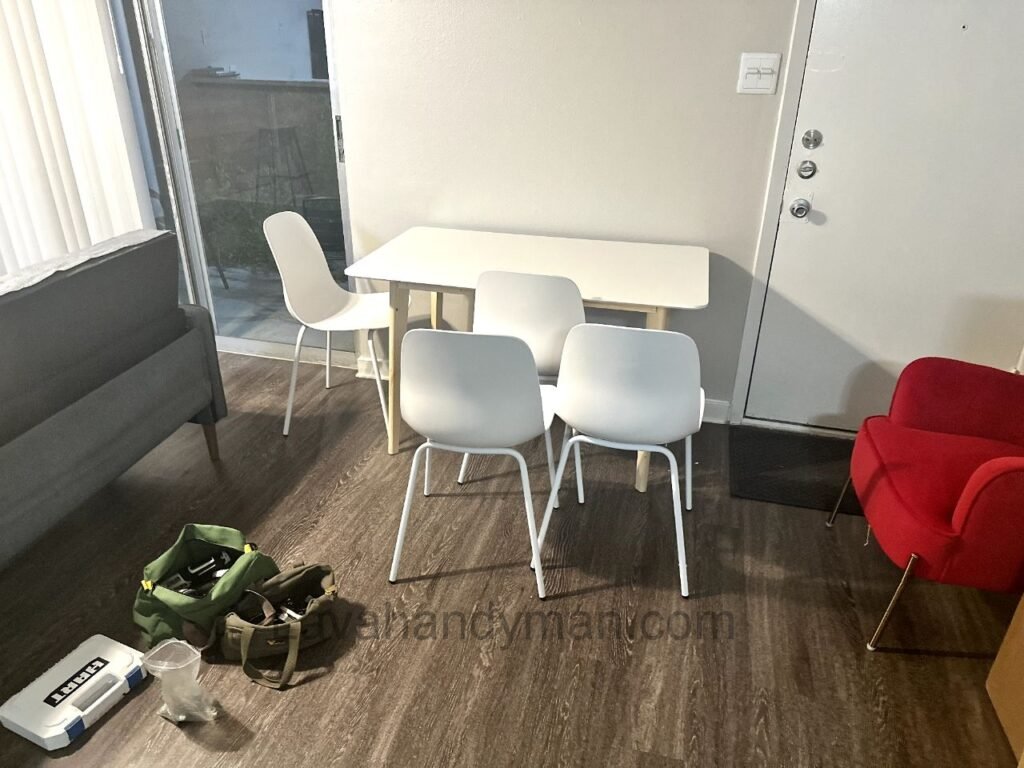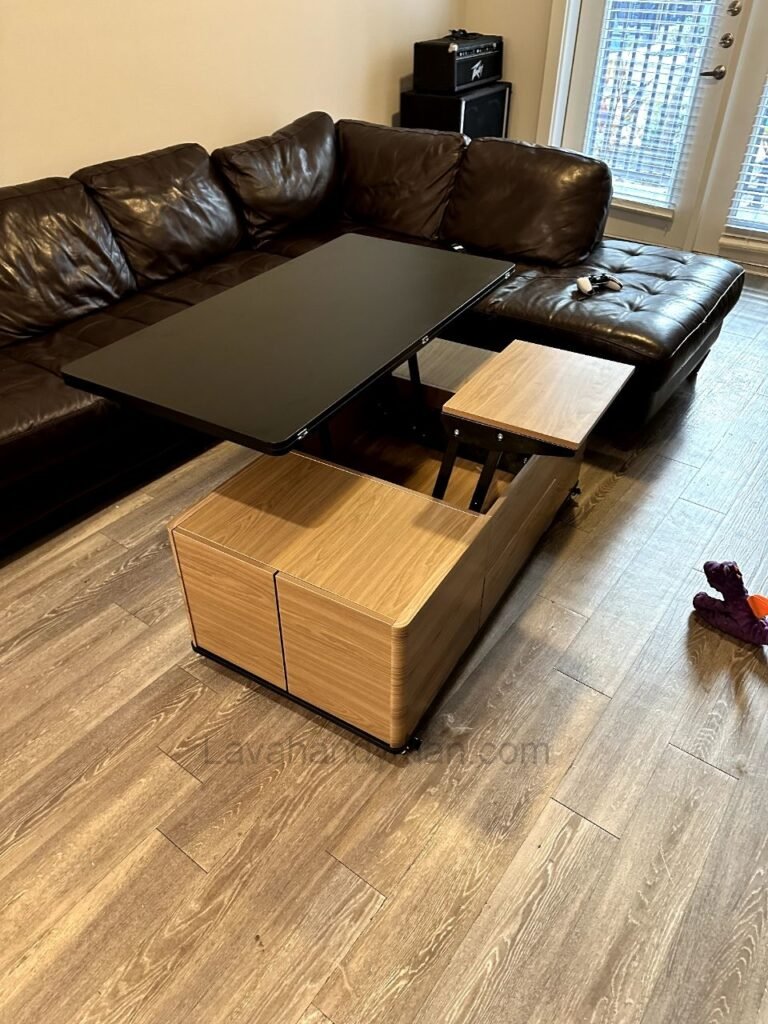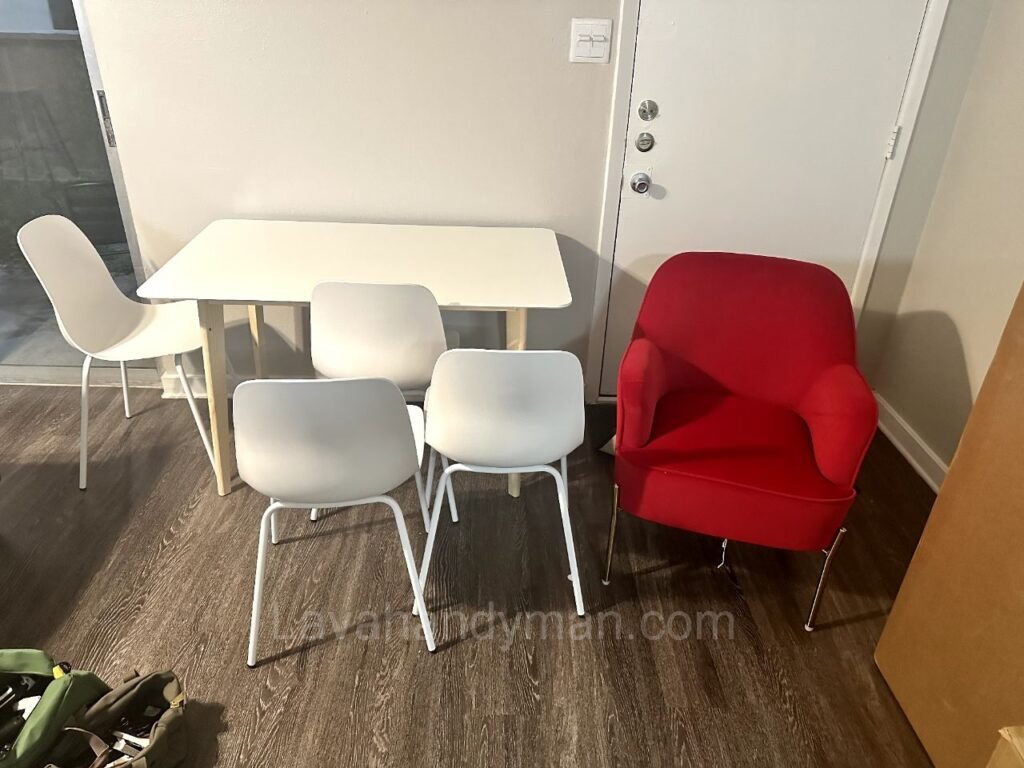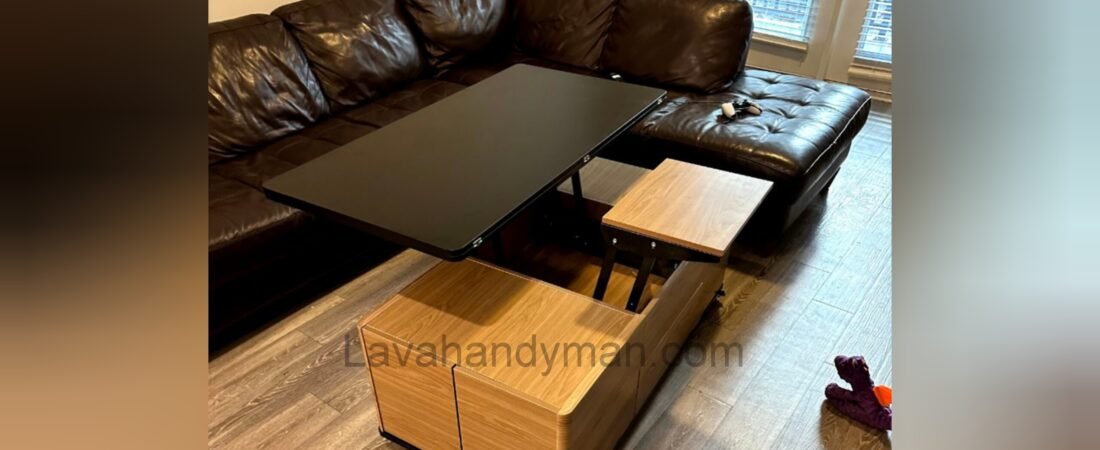Assemble Furniture: A Comprehensive Guide to Dining and Coffee Tables
1. Introduction
In modern urban living, limited space and increasing mobility have led to the demand for functional, portable, and affordable furniture. Assemble furniture, also known as flat-pack or ready-to-assemble furniture, addresses this need by offering products that can be assembled by the user at home. This article focuses on two of the most popular types: dining tables and coffee tables.
2. A Brief History
Assemble furniture first gained global attention in the 1940s, popularized by the Swedish brand IKEA. Their concept of lightweight, flat-packed, user-assembled furniture revolutionized the furniture industry. In countries like Iran, this model has become increasingly popular over the past two decades, especially among young families and urban dwellers.
Assemble Furniture: A Comprehensive Guide to Dining and Coffee Tables

3. Advantages of Assemble Furniture
- Cost-Effective: No need to pay for installation or professional movers.
- Easy Transportation: Flat-pack design makes it suitable for apartments without elevators or frequent relocations.
- Customization Options: Many options for material, color, and size.
- User Engagement: DIY assembly offers a sense of accomplishment and technical engagement.
- Space Saving: Modular or foldable designs reduce space consumption.
4. Drawbacks and Challenges
- Assembly Errors: Mistakes may occur if instructions aren’t followed precisely.
- Variable Quality: Some budget options may use low-durability materials.
- Time-Consuming Setup: Requires patience and care.
- Risk of Damage During Assembly or Disassembly.
- Limited Repair Options if a part breaks.
5. Components of Dining and Coffee Tables
Key Parts:
- Tabletop: Typically made of solid wood, MDF, or tempered glass.
- Legs/Base: Usually wood or metal, attached via screws.
- Hardware: Screws, nuts, bolts, washers, brackets, Allen keys.
- Instruction Manual: Visual or written step-by-step guide.
Assemble Furniture: A Comprehensive Guide to Dining and Coffee Tables
6. Choosing the Right Material
1. Tabletop
- Solid Wood: Durable and elegant but heavy and costly.
- MDF with Laminate: Lightweight, affordable, suitable for small spaces.
- Glass: Modern look, but needs extra care to avoid scratches or breaks.
2. Legs/Base
- Metal: Sturdy, easy to clean, ideal for industrial styles.
- Wood: Warm, classic, and often repairable.
7. Popular Design Styles
- Minimalist: Clean lines, neutral tones, no excessive decorations.
- Rustic: Natural wood finishes, cozy and traditional.
- Industrial: Combination of wood and metal, neutral colors.
- Contemporary: Smooth curves, innovative materials, bold colors.
8. Guide to Choosing a Dining Table
- Seating Capacity: Around 60 cm (24 in) of width per person.
- Common Sizes:
- 4-seater: 120×80 cm
- 6-seater: 150–180 cm
- Standard Height: 75 cm
- Optional Features: Foldable legs, extendable tops, adjustable feet.
Assemble Furniture: A Comprehensive Guide to Dining and Coffee Tables
9. Guide to Choosing a Coffee Table
- Fit the Living Space
- Standard Height: 40–50 cm
- Nesting or Modular Designs: Ideal for compact or modern interiors
- Durable Surface: Scratch-resistant glass or moisture-proof wood
10. Assembly Instructions
Step-by-Step:
- Check the parts list and required tools
- Place components on a soft surface (e.g., carpet or cardboard)
- Attach legs loosely
- Ensure level alignment
- Tighten all screws
- Check for stability
Tips:
- Use a level tool
- Start with central screws
- Avoid overtightening
- Follow the manual precisely
Assemble Furniture: A Comprehensive Guide to Dining and Coffee Tables
11. Maintenance and Durability
- Cleaning: Use a soft cloth, avoid harsh chemicals
- Prevent Scratches: Use coasters, heat pads, and leg protectors
- Recheck Screws: Every 6 months
- Polish/Wax: For natural wood surfaces
- Avoid Excess Moisture and Direct Sunlight
12. Top Brands and Models
| Brand | Features | Popular Models |
|---|---|---|
| IKEA | Creative design, easy assembly | LACK, LINNMON, EKEDALEN |
| Nofin (IR) | Iranian design, budget-friendly | Mahan, Arsen, Tisa |
| HomeMart | Custom colors and sizes available | Romeo, Adrian, Pegah |
13. Versatile Uses in Modern Living
- Ideal for students and renters
- Great for young couples on a budget
- Suitable for offices, cafes, co-working spaces
- Quick setup for temporary setups like exhibitions or events
14. Environmental Considerations
- Recyclable Packaging
- Low-emission MDF (E0 or E1 certified)
- Durability and repairability reduce waste
- Part replacements instead of full replacements
15. The Future of Assemble Furniture
- Smart Tables: Built-in wireless chargers, LED lights
- Augmented Reality: Visualizing furniture in your space via smartphone
- 3D Printed Spare Parts
- Interactive Assembly Apps: Video guides and AI assistance
Assemble Furniture: A Comprehensive Guide to Dining and Coffee Tables
🧰 Required Tools for Assembly
| Tool | Purpose |
|---|---|
| Allen key | Tightening specific bolts (often included) |
| Flat or Phillips screwdriver | For general screws |
| Adjustable wrench (if needed) | For larger bolts/nuts |
| Rubber mallet | Light taps to fit pieces without damage |
| Spirit level | Ensuring a flat tabletop surface |
| Soft cloth or cardboard | To protect parts during assembly |
🛠 Optimized Steps for Assembling Dining or Coffee Tables
1. Prepare the Workspace
- Choose a soft surface like carpet or cardboard.
- Unbox all parts and match them with the instruction manual checklist.
2. Attach the Legs
- Position the legs in their designated spots underneath the tabletop.
- Insert screws by hand, then tighten using an Allen key or screwdriver.
- Only semi-tighten at this stage to allow for adjustments later.
3. Install Supporting Components (If Applicable)
- If your table includes crossbars or metal brackets, follow the manual to install them.
- Always use washers with screws to prevent loosening over time.
4. Level the Table
- Use a spirit level to check the tabletop’s alignment.
- If one leg is shorter, adjust with screw depth or apply adhesive foot pads.
Assemble Furniture: A Comprehensive Guide to Dining and Coffee Tables

5. Final Tightening
- Once the table is level and aligned, fully tighten all screws and bolts.
- Carefully lift the table into its final position (do not drag).
6. Final Checks and Safety
- Ensure all legs are firm and there’s no wobbling.
- Apply anti-scratch pads or leg protectors underneath.
- Wipe down the tabletop with a soft cloth — it’s ready to use!
✅ Post-Assembly Maintenance Tips
Avoid direct sunlight and excess moisture.
Check and retighten screws every 3–6 months.
Clean wood surfaces with a soft cloth and furniture polish.
Clean glass surfaces with a glass cleaner and microfiber cloth.
🎯 The Importance of Proper Assembly of Dining and Coffee Tables
Assembling furniture correctly isn’t just a technical step — it’s essential for ensuring safety, durability, appearance, and functionality. Here’s why proper assembly matters:
1. 🛡️ Enhanced Safety
Poorly assembled tables may wobble, collapse, or tip over.
Proper assembly minimizes the risk of accidents, especially around children and elderly individuals.
2. 🔧 Increased Durability and Lifespan
When parts are securely connected, the table can withstand weight and pressure better, resulting in a longer product life.
3. ✅ Stability and Proper Function
In complex tables (e.g., folding or with drawers), incorrect assembly can prevent mechanisms from working smoothly.
Proper setup ensures quiet, smooth, and reliable operation.
4. ✨ Improved Aesthetics
Misaligned legs or uneven parts can make the table look crooked or unprofessional.
Accurate assembly ensures a symmetrical, level, and visually pleasing result.
5. 💸 Reduced Repair Costs
Improper assembly can damage parts over time, leading to costly repairs or replacements.
Doing it right the first time saves money in the long run.
6. 📦 Easy Reassembly During Moves
Well-assembled tables are easier to disassemble and reassemble during relocation — a big plus for renters or frequent movers.
7. 😊 Sense of Ownership and Satisfaction
Assembling the table yourself provides a deeper understanding of its structure and creates a stronger sense of satisfaction and responsibility in maintaining it.
Choosing the Best Material for Dining and Coffee Tables
The choice of table material depends on its use, budget, décor style, and maintenance conditions. Below are the most common materials with their advantages and disadvantages:
Assemble Furniture: A Comprehensive Guide to Dining and Coffee Tables
1. Solid Wood
Advantages:
- Durable and long-lasting
- Warm and luxurious appearance
- Repairable and refinable
Disadvantages:
- Expensive
- Heavy and sensitive to moisture and heat
Ideal for: Classic, rustic décor and permanent homes
2. MDF with Veneer (Melamine, High Gloss, PVC)
Advantages:
- Affordable
- Lightweight and portable
- Wide variety of colors and designs
Disadvantages:
- Less durable than solid wood
- Susceptible to water damage and impact
Ideal for: Rental homes, modern and minimalist styles
3. Metal
Advantages:
- Very strong and durable
- Suitable for industrial and modern spaces
Disadvantages:
- Cold and industrial look
- Can rust in humid environments
Ideal for: Offices, cafés, and modern spaces
Assemble Furniture: A Comprehensive Guide to Dining and Coffee Tables
4. Glass
Advantages:
- Beautiful and transparent
- Easy to clean
- Creates an open, spacious feel
Disadvantages:
- Fragile and prone to breakage
- Shows fingerprints and smudges easily
Ideal for: Modern homes without small children
5. Stone (Marble, Granite)
Advantages:
- Very luxurious and durable
- Resistant to heat and scratches
Disadvantages:
- Heavy and expensive
- Requires special care
Ideal for: Luxury décor and formal settings
Assemble Furniture: A Comprehensive Guide to Dining and Coffee Tables
6. Combination (Wood + Metal, MDF + Glass)
- Combines the benefits of multiple materials
- A popular choice for contemporary tables
Material Recommendations Based on Use:
| Use Case | Recommended Material |
|---|---|
| Daily use | High-quality MDF or engineered wood |
| Modern décor | Glass & metal or high-gloss MDF |
| Classic style | Solid wood |
| Homes with children | Durable MDF with rounded edges |
| Formal dining tables | Stone or solid wood |
Conclusion
Assemble furniture, especially dining and coffee tables, combines functionality, affordability, and visual appeal. With the right material choices, proper assembly, and regular care, these pieces can serve reliably for years. As the industry evolves, we can expect more intelligent, eco-conscious, and user-friendly designs to emerge.
📞 Need Help?
Let us take care of the hard work while you sit back and relax.
📍 Serving: Austin, Round Rock, Cedar Park & more
📱 Call or Text: (737) 420-6992
🌐 Visit: https://lavahandyman.com


